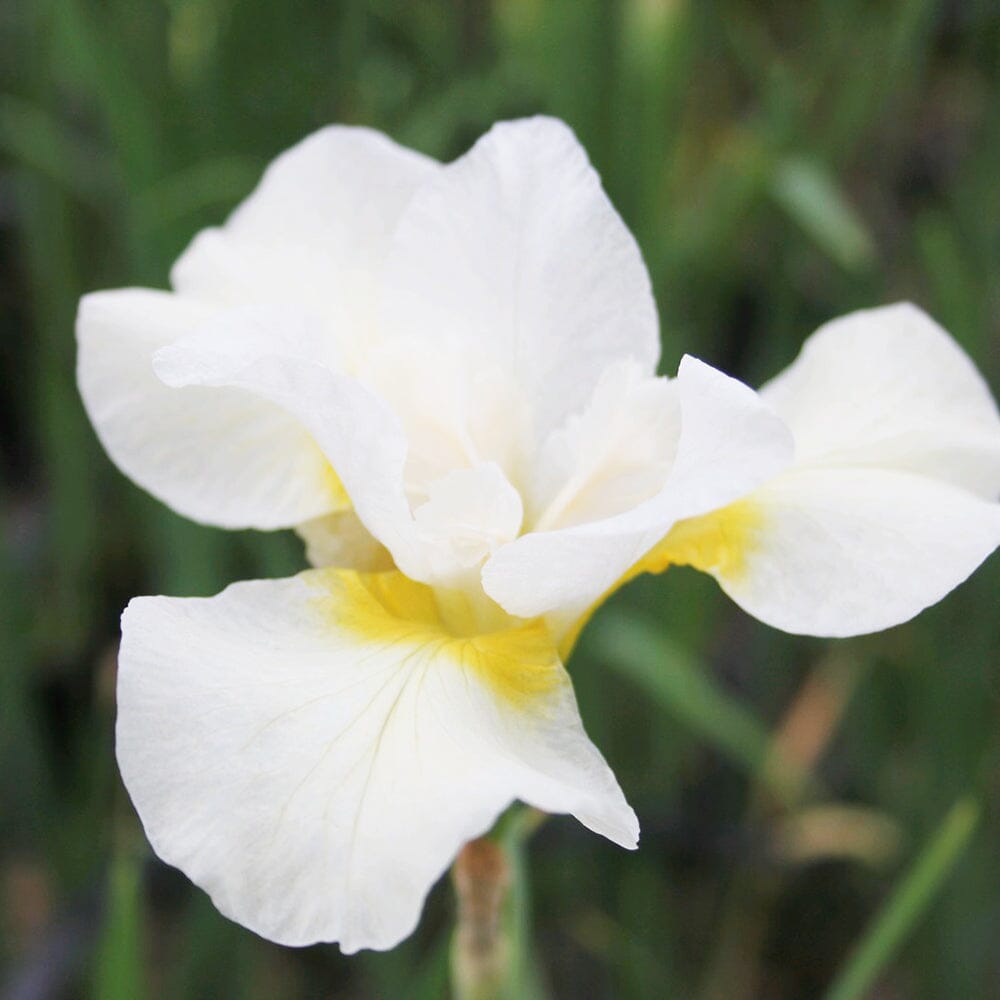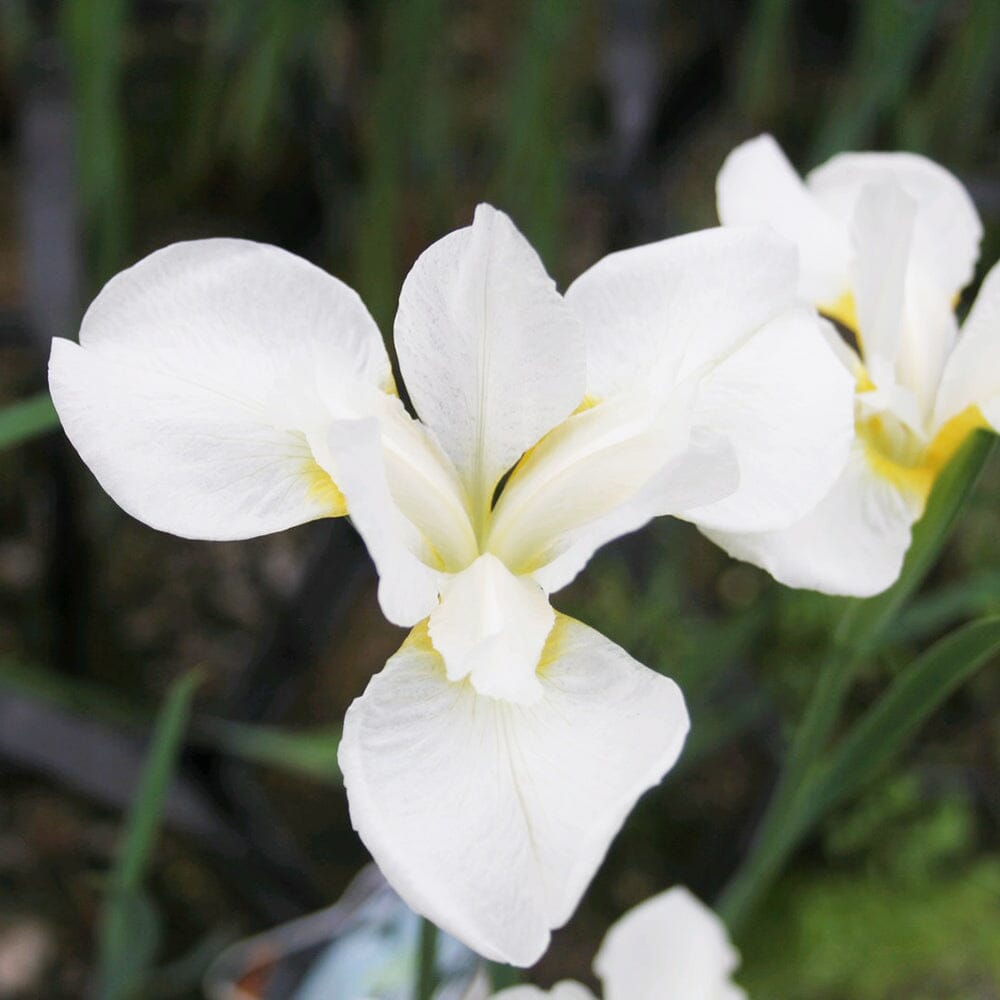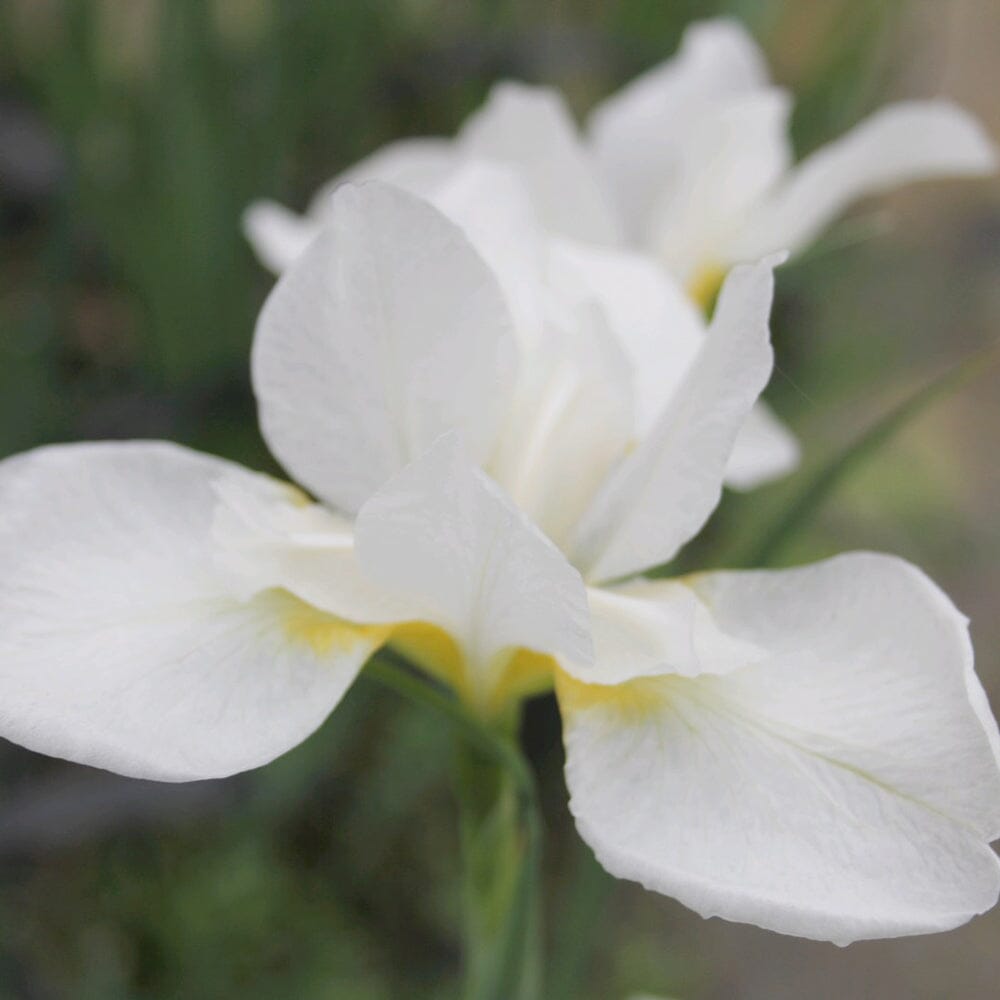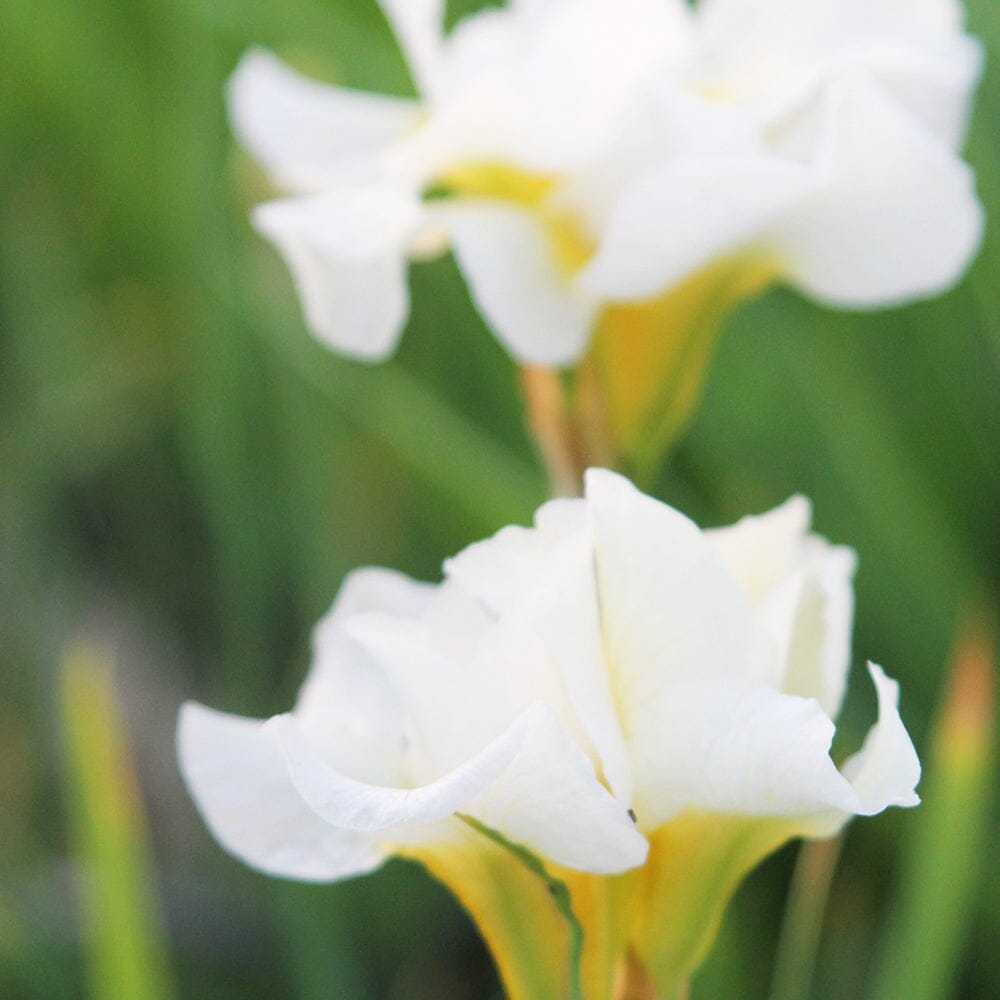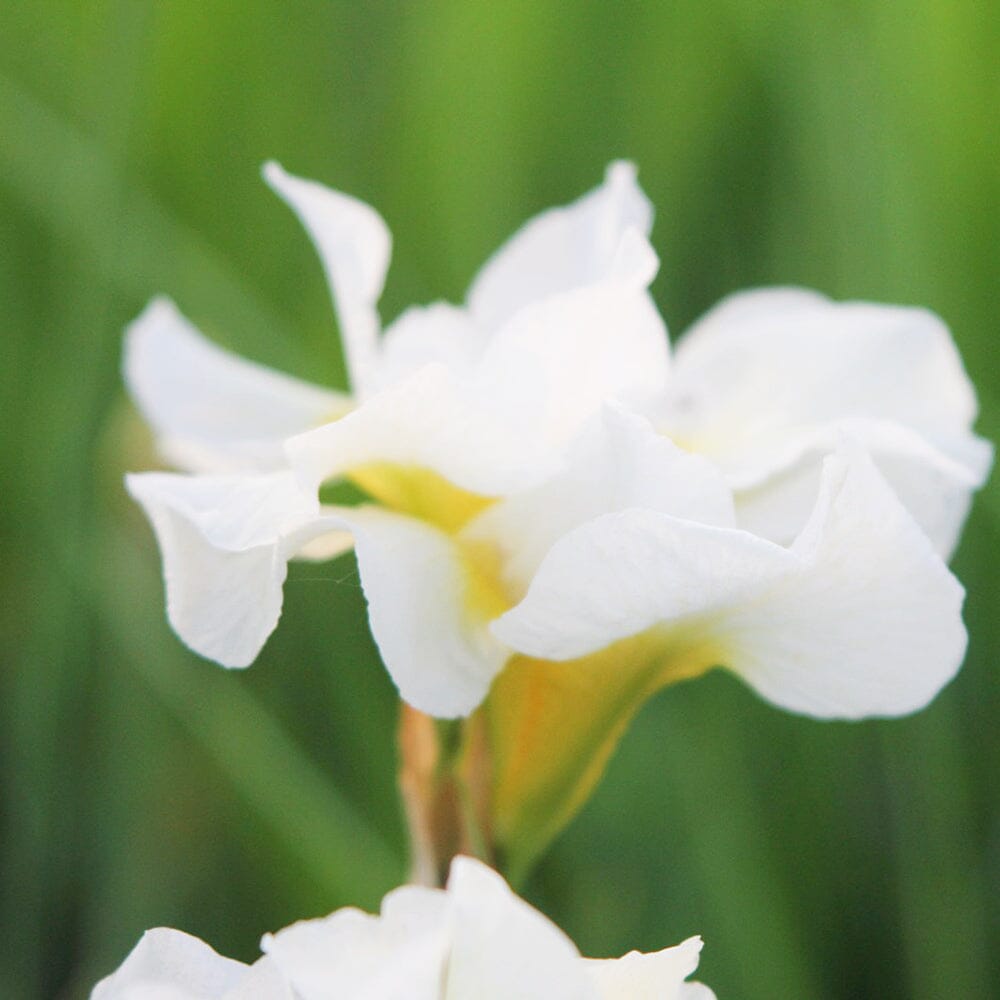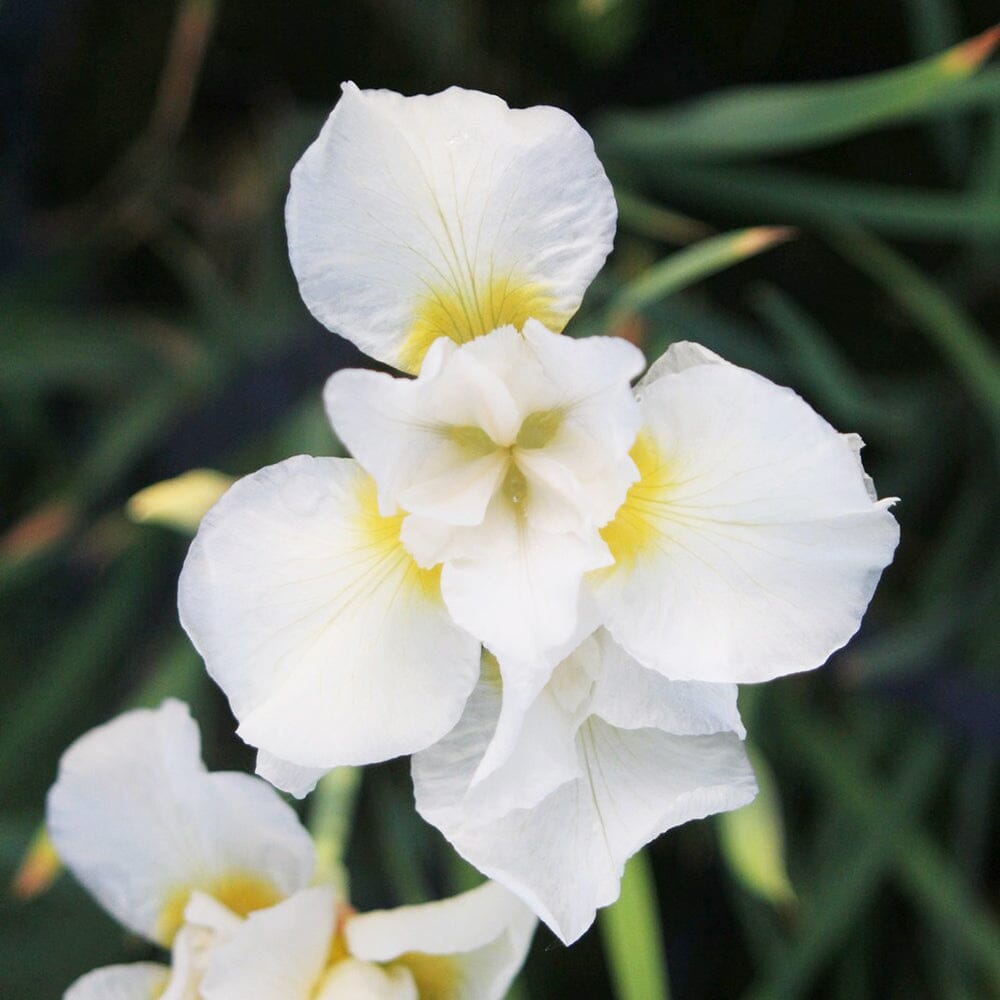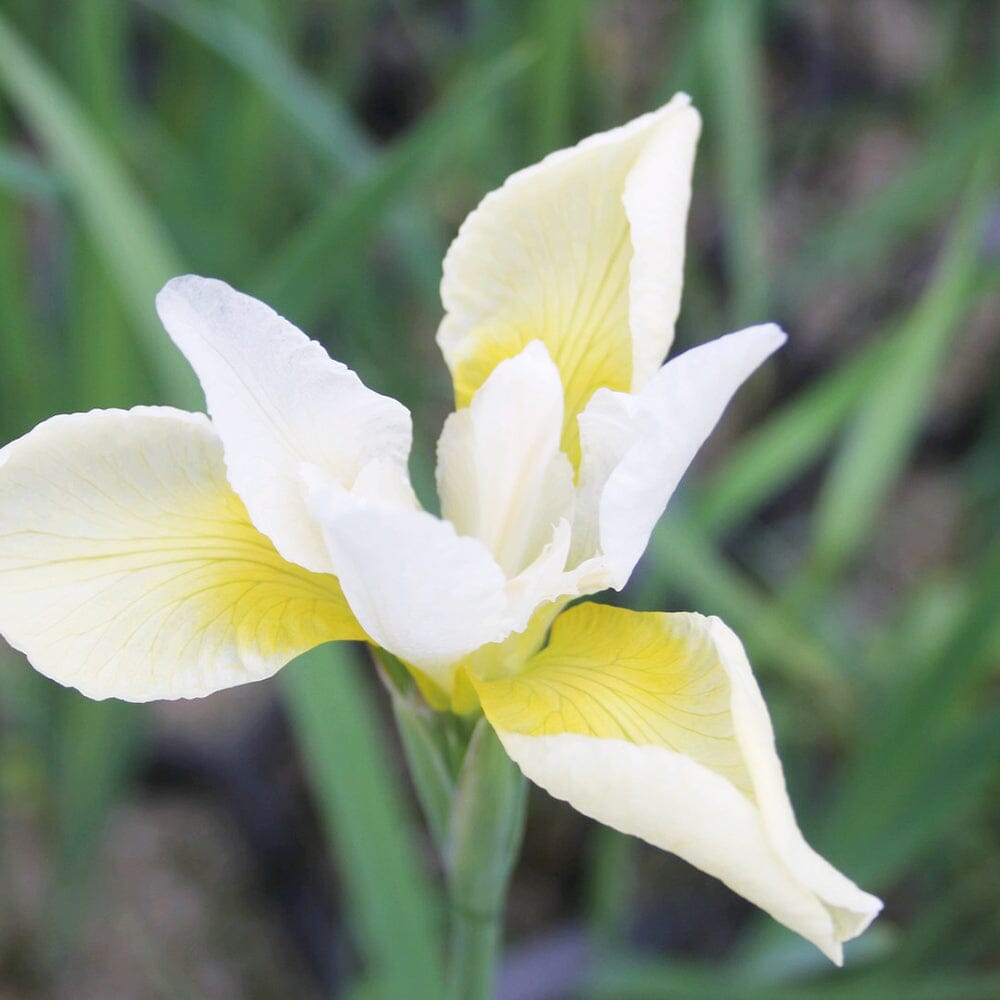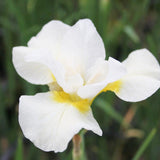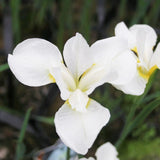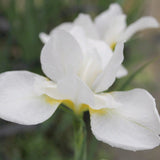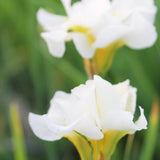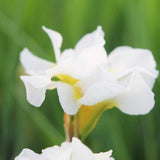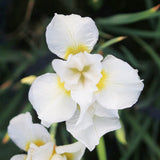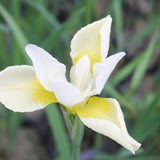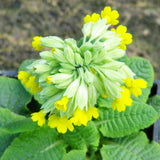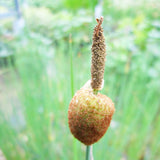Iris Sibirica Snow Queen Aquatic Pond Plant - Snow Iris
Iris sibirica 'Snow Queen' is a herbaceous perennial plant that belongs to the Iris genus. It is a cultivar of Iris sibirica, a species native to Europe and Asia. 'Snow Queen' is known for its elegant and delicate appearance. It forms clumps of narrow, upright foliage that grows up to 3 feet (90 cm) tall. The leaves are linear and grass-like, with a deep green color. In early summer, it produces showy flowers on tall stems that rise above the foliage. The blooms are large, pure white, and have a velvety texture. They have falls with veining patterns and upright standards, creating a beautiful contrast.
Care Guide:
Light: Iris sibirica 'Snow Queen' thrives in full sun to partial shade. It prefers at least 6 hours of direct sunlight per day to promote healthy growth and abundant flowering. However, it can tolerate partial shade, especially in hot climates.
Water: This iris variety prefers consistently moist soil but should not be waterlogged. Provide regular watering to keep the soil evenly moist, especially during the growing season. Avoid overwatering, as excessive moisture can lead to root rot. Once established, it can tolerate moderate drought conditions.
Soil: 'Snow Queen' prefers moist, well-draining soil. It can adapt to a range of soil types, including loam, clay, and sandy soils. Ensure the soil is enriched with organic matter to improve its fertility and moisture retention. It prefers slightly acidic to neutral pH levels.
Maintenance: Iris sibirica 'Snow Queen' is a low-maintenance plant. Remove spent flowers to encourage continuous blooming and maintain the plant's overall appearance. In late autumn or early spring, cut back the foliage to about 4-6 inches (10-15 cm) above ground level to promote new growth.
Mulching: Apply a layer of organic mulch around the base of the plants to help retain moisture, suppress weeds, and provide insulation to the roots during extreme temperatures.
Division: Over time, Iris sibirica 'Snow Queen' may develop overcrowded clumps. Divide the plant every 3-4 years in late summer or early autumn to maintain its vigor and promote better flowering. Dig up the clump, separate the rhizomes, and replant them at the desired spacing.
Pests and Diseases: 'Snow Queen' is generally resistant to pests and diseases. However, it may occasionally encounter issues such as iris borers, slugs, snails, or fungal diseases like leaf spot. Monitor the plants regularly and take appropriate measures if any problems arise.
Iris sibirica 'Snow Queen' is a stunning addition to perennial borders, cottage gardens, or water features. Its graceful form, white blooms, and reliable performance make it an attractive choice for creating a serene and elegant garden display. With proper care, it will reward you with beautiful flowers year after year.
Selection:
Research different species of marginal pond plants to find ones that suit your pond's conditions and your aesthetic preferences. Consider factors such as height, flower colour, foliage texture, and seasonal interest when selecting plants.
Placement:
Observe the natural conditions of your pond, such as sun exposure, soil type, and water movement, and choose plants that are adapted to those conditions. Create different planting zones around the pond, with plants that prefer wet soil closer to the water's edge and those that tolerate drier soil further away.
Sunlight:
Marginal plants typically thrive in full sun to partial shade. Some species can tolerate more shade, but for optimal growth and flowering, provide them with at least 6 hours of direct sunlight per day.
Water Depth:
Determine the water depth requirements of the marginal plants you choose. Some plants prefer water up to 6 inches deep, while others can tolerate water up to 12 inches or more. Ensure that the water level remains consistent within the preferred range for the chosen plants.
Soil:
Marginal plants prefer a rich, loamy soil that retains moisture but is not waterlogged. Amend the soil with organic matter, such as compost or well-rotted manure, to improve its fertility and drainage. Avoid using heavy clay soil, as it can become compacted and restrict root growth.
Planting:
Dig a hole slightly larger than the root ball of the plant and loosen the soil at the bottom. Place the plant in the hole, ensuring that the crown is level with or slightly above the soil surface. Backfill the hole with soil and gently firm it around the plant to eliminate air pockets. Water thoroughly after planting to settle the soil and provide initial hydration.
Mulching:
Apply a layer of organic mulch around the base of the plants to suppress weeds, conserve moisture, and regulate soil temperature.Use materials like straw, shredded bark, or compost, and maintain a depth of 2-3 inches.
Watering:
Marginal plants prefer consistently moist soil but should not be waterlogged. Monitor the moisture level regularly and water as needed to keep the soil evenly moist. During hot and dry periods, provide supplemental watering to prevent the soil from drying out.
Fertilization:
Marginal plants generally do not require heavy fertilization if the soil is nutrient-rich. However, if growth appears weak or leaves show signs of nutrient deficiencies, apply a balanced slow-release fertilizer according to the manufacturer's instructions.
Maintenance:
Remove any yellowing or dead leaves to maintain plant health and appearance. Divide overcrowded plants every few years to prevent competition for resources and promote vigorous growth. Prune back excessive growth to maintain a tidy appearance and to prevent plants from encroaching on other plants or the pond itself.
Winter Care:
Hardy marginal plants can withstand winter temperatures and require minimal care. Cut back dead foliage in late fall or early spring to tidy up the planting area. In colder regions, consider protecting tender plants with a layer of mulch or covering them with burlap during winter to prevent frost damage.
Monitoring and Troubleshooting:
Regularly inspect plants for signs of pests, diseases, or nutrient deficiencies. Address any issues promptly with appropriate treatments, such as organic insecticides, fungicides, or nutrient amendments. By following these detailed tips and providing proper care, you can create a beautiful and thriving planting zone around your pond, enhancing its visual appeal and supporting a diverse ecosystem.








